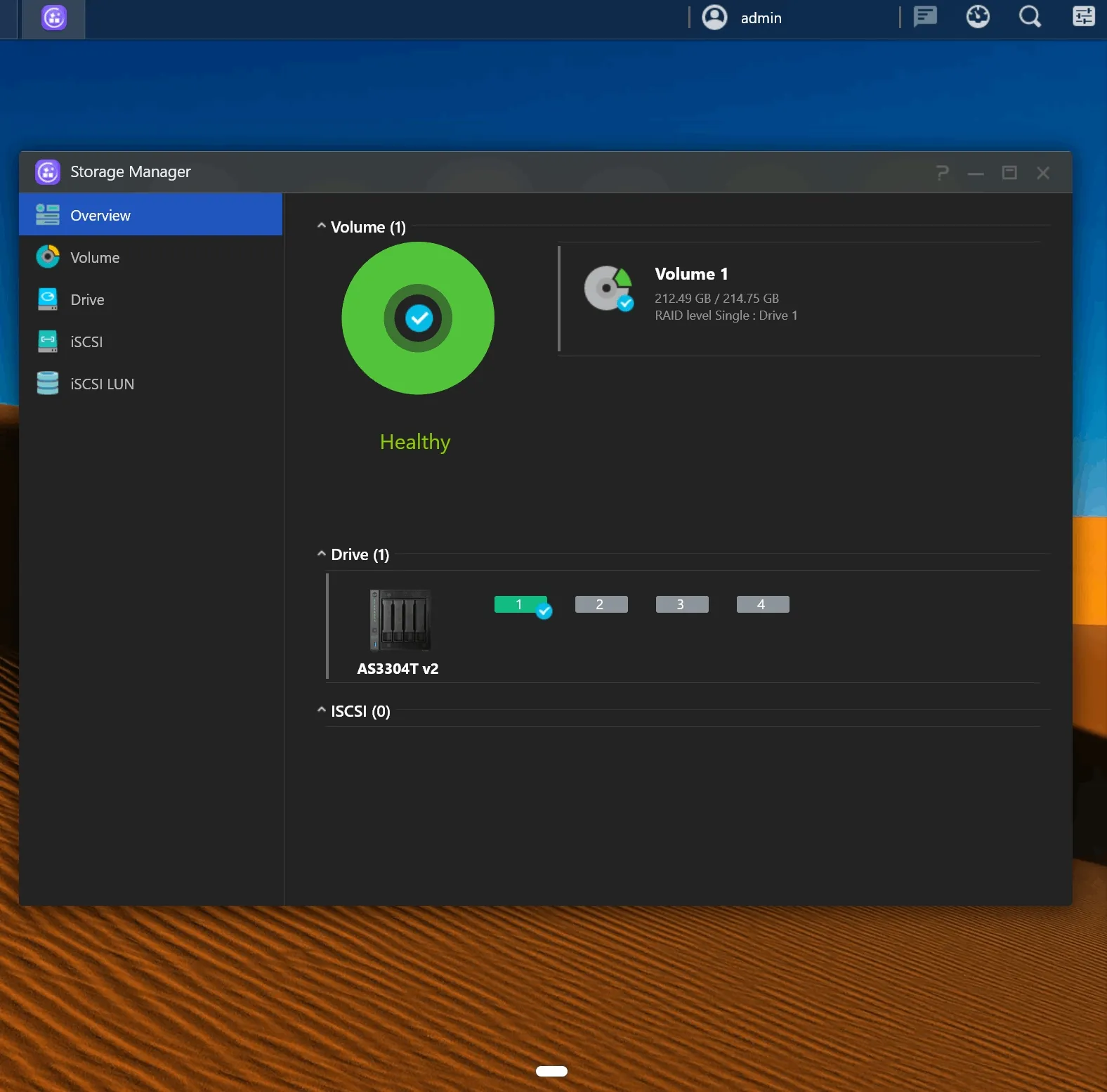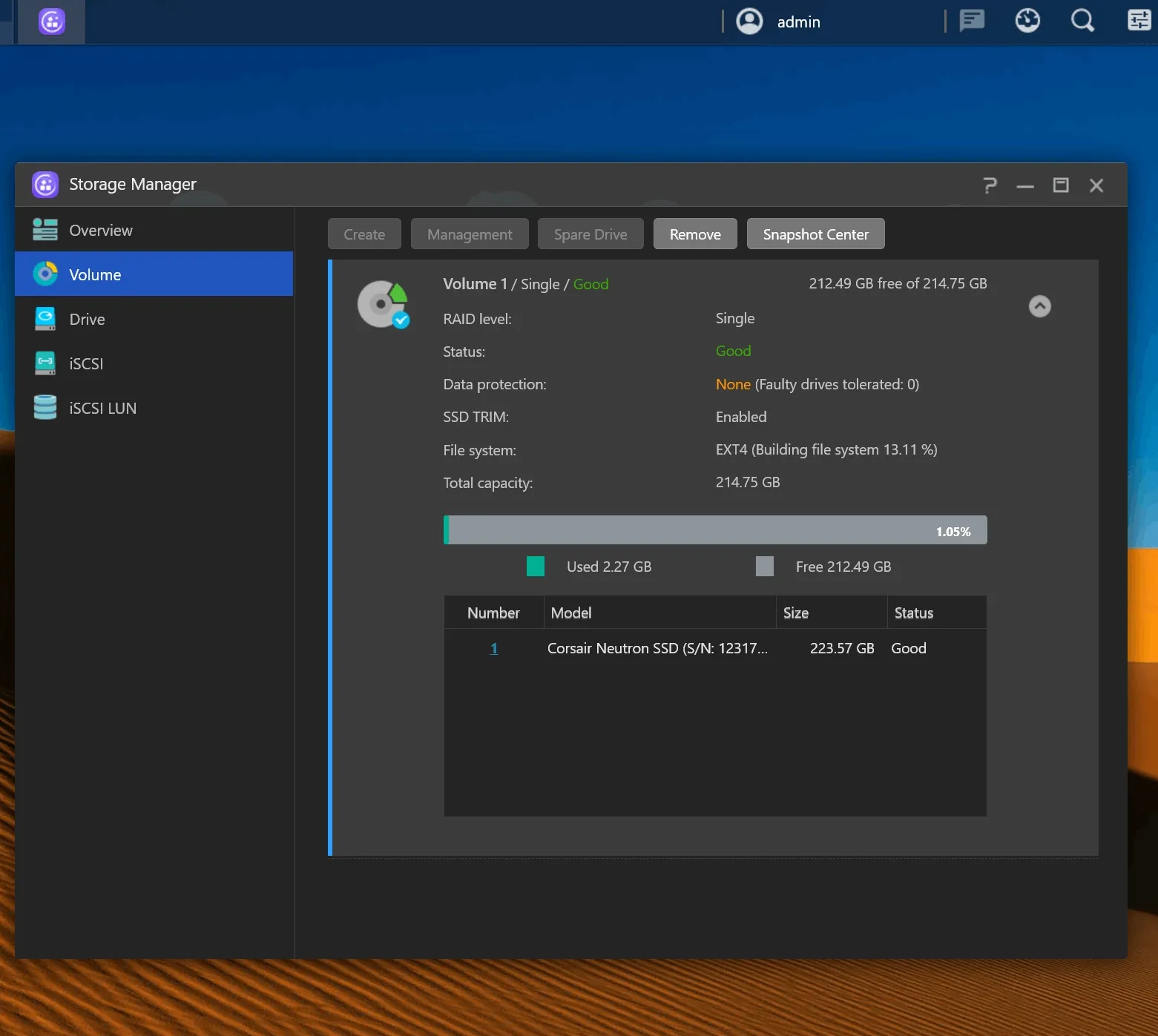Storage & RAID setup
We're diving into the 4-bay NAS version, which offers the flexibility of setting up RAID configurations. Here's a glimpse of what you can do with four drive bays:
- Dedicate a 4 TB SSD for the operating system and apps to enhance the NAS's performance.
- Combine three 4 TB drives in a RAID5 setup for durable storage with the added benefit of redundancy, allowing the system to withstand a single drive failure.
- Allocate one 4 TB drive as a hot spare. In the event of a drive failure, this spare will automatically step in to restore the array back to full operation, adding an extra layer of data protection.
In the accompanying screenshot, you'll notice the SSD already configured. Whether you're interested in a simple JBOD (Just a Bunch Of Disks), RAID 0/1 for mirroring and striping, or a RAID5 with a 3+1 hot spare setup for automatic recovery, the volume setup wizard offers the versatility you need. You could even opt for an all-SSD RAID5 for speed or explore different RAID configurations to suit your storage needs.
After setting up your chosen configuration, the initialization process completes quickly. However, RAID synchronization could take some time, ranging from minutes to hours, depending on the size of your volume and the NAS's CPU power. But there's no need to wait idly; you can start using the NAS and even begin saving files immediately. Meanwhile, explore the rich features ASUSTOR offers, from encryption options to S.M.A.R.T diagnostics.
filesystem btrfs
For your file system please do select filesystem btrfs as it will open up a feature that you'll like very much, snapshots of your storage volumes. These are an incredibly easy way to restore backups. Btrfs is a file system based on the copy-on-write (COW) principle. So it's not like you have to do snapshots, but if you'd like to use the feature, at least you already have your file system compatibility.





